Cyclical Traces
by Raviya Azad
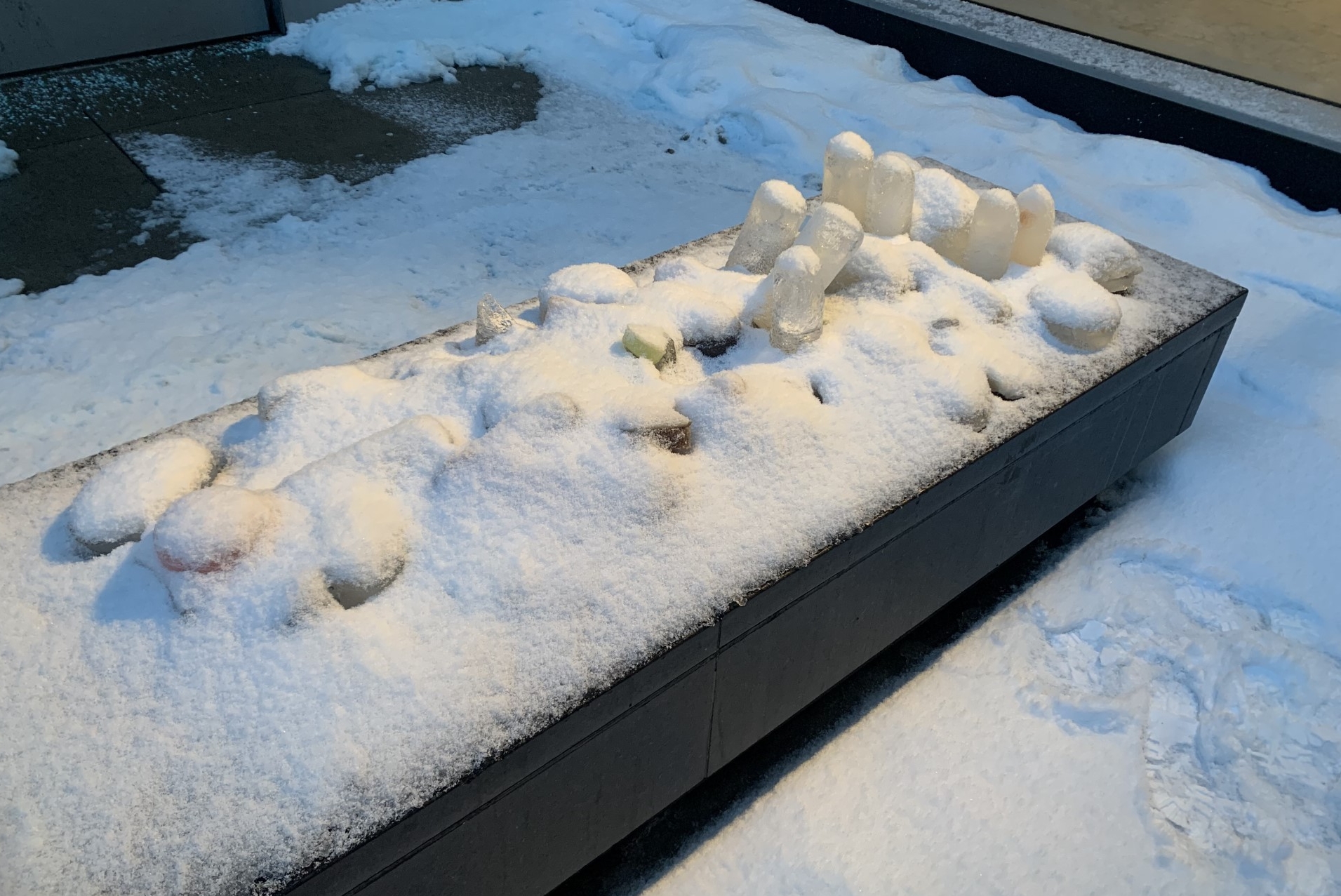 Zebras Collective, And the suspicion arises that even the zebra was not designed for our benefit.
Zebras Collective, And the suspicion arises that even the zebra was not designed for our benefit.
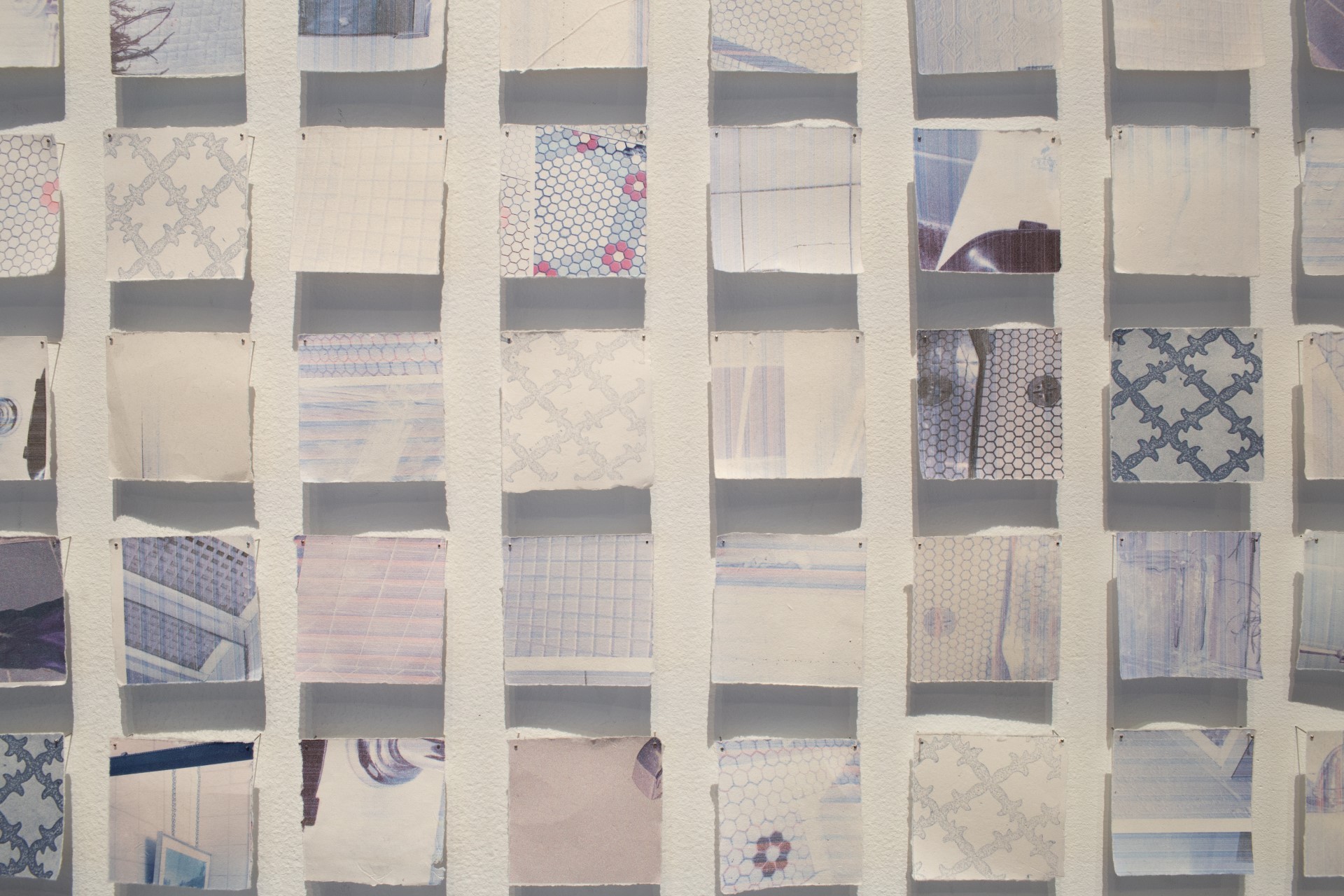 Clara-Jane Rioux Fiset, vestiges de nos déshabillements
Clara-Jane Rioux Fiset, vestiges de nos déshabillements
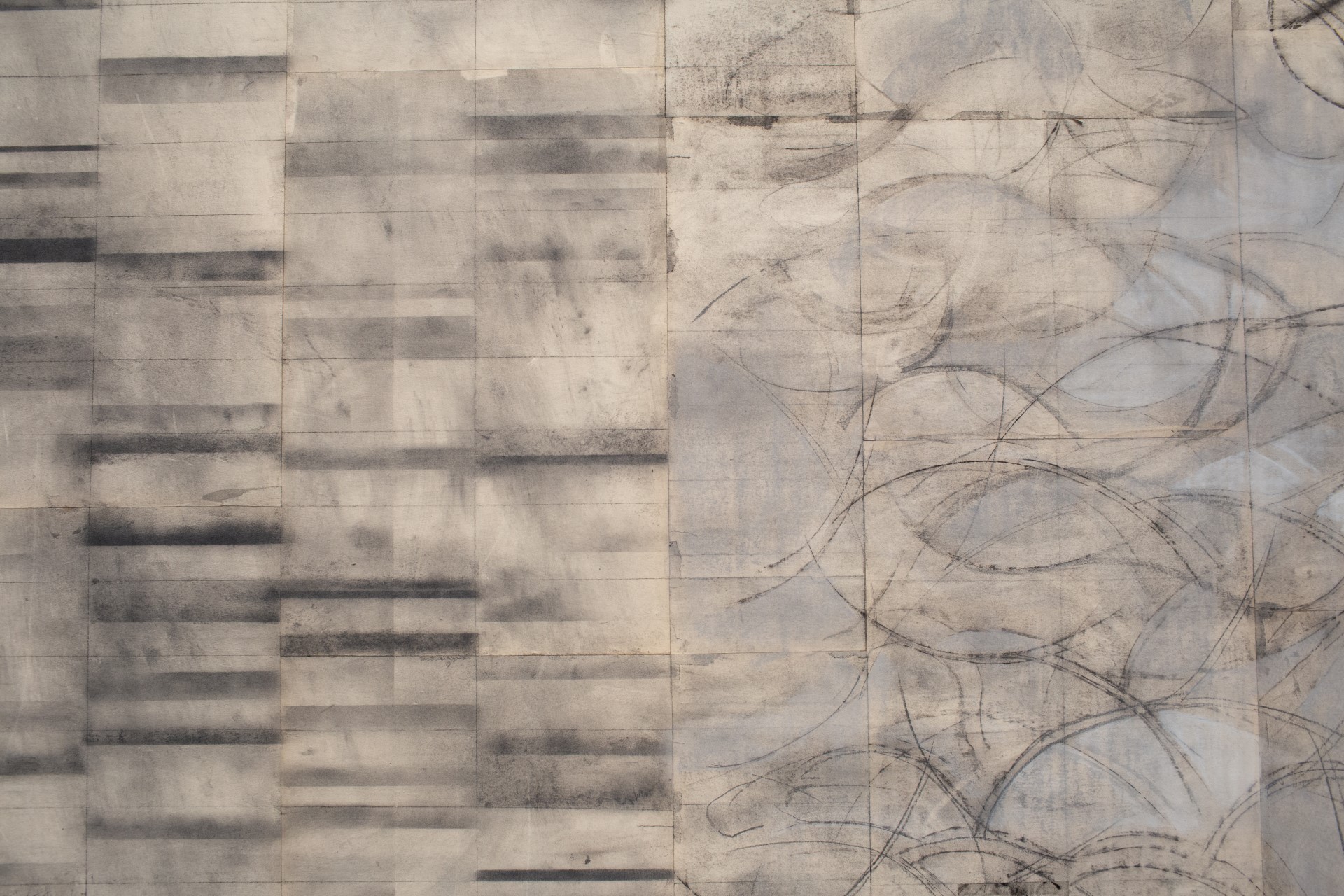 Catherine Desroches, déliaison du corps contre le ciel
Catherine Desroches, déliaison du corps contre le ciel
What might occur were we to betray our fidelity to the future? No longer hastened by the urgency to catch up to a distant reality, we find ourselves more deeply attuned to our present moment; our environment and its material realities. Latent, cyclical processes subtly emerge, and we follow the tracks they leave. We slow down enough to sense movement, catch a glimpse of a figure, a whiff of a lingering scent.
The artworks in this exhibition supplant this urgency, borne of modernity’s unrelenting march towards the future, by offering a way of seeing and making that is steeped in the slowness of the present. The artworks And the suspicion arises that even the zebra was not designed for our benefit (2024), vestiges de nos déshabillements (2022), and déliaison du corps contre le ciel (2022) make perceptible the everyday life cycles that are lost in the din of our hurried lives.
The artists ruminate on the marks made by our movement through the world: our relationship to waste, the peculiarities of our private spaces, and the remnants of a creative process. These threads connect the works of the Zebras collective (composed of Yann-Marc Pignard and Rianna Huynh), and the artists Clara-Jane Rioux Fiset and Catherine Desroches.
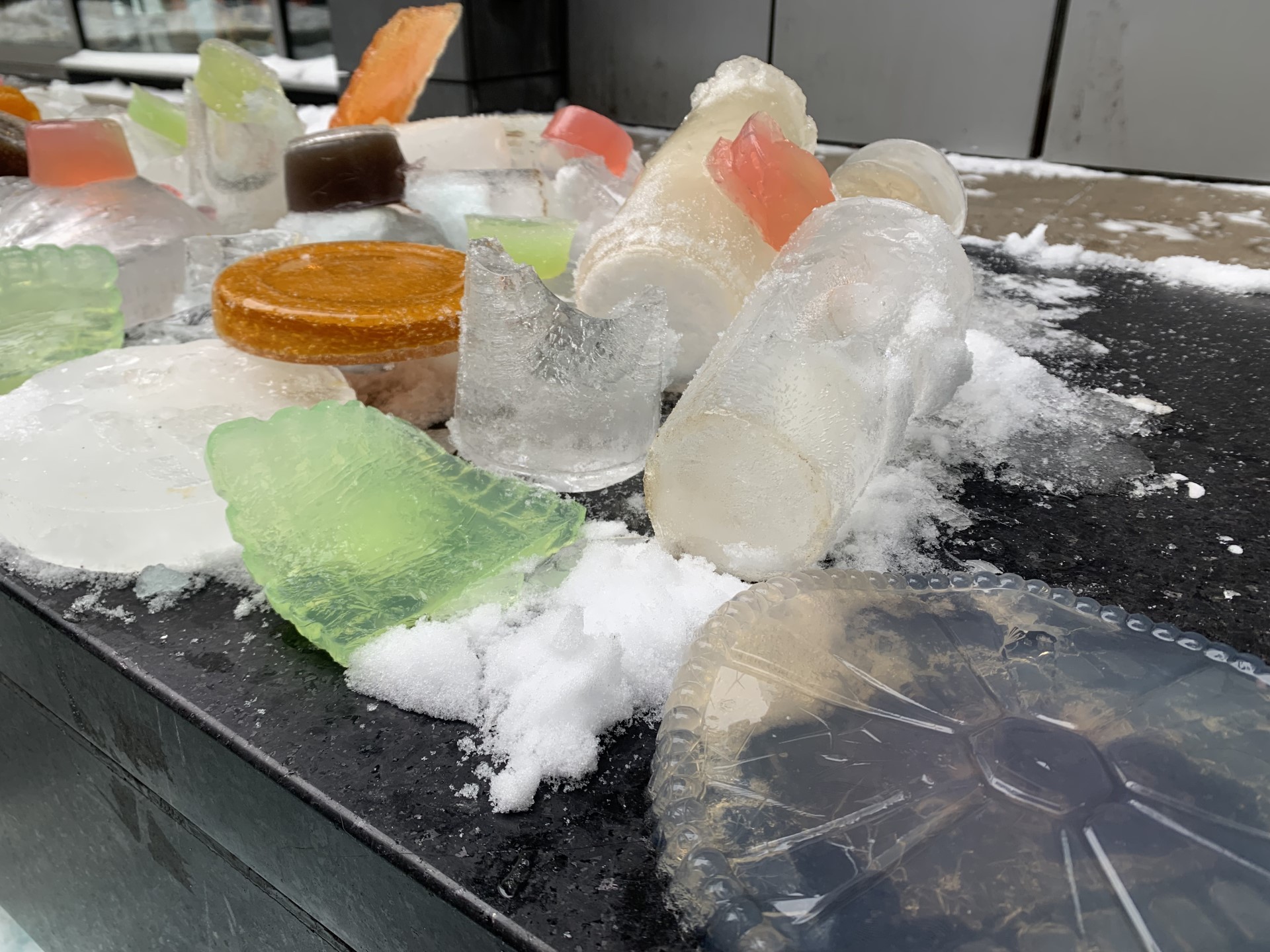
 Zebras Collective, And the suspicion arises that even the zebra was not designed for our benefit, 2024, ice, agar, and natural dyes, variable dimensions. Photo Credit Courtesy of the artists
Zebras Collective, And the suspicion arises that even the zebra was not designed for our benefit, 2024, ice, agar, and natural dyes, variable dimensions. Photo Credit Courtesy of the artists
In the Gallery’s concrete courtyard in the dead of winter, lies a gathering of iced objects: frosty white, translucent, with muted red and orange hues. From a distance, they appear as an array of unidentifiable shapes, but upon moving closer one begins to see distinguishable forms emerge. Through the ice, one can make out the ridged edges of a takeout container, the elongated neck of a bottle of orange juice, or the cylindrical shape of a disposable coffee cup. Single-use plastic packaging serves as moulds for various ice and agar-agar sculptures.
Inside the ice sculptures, crystals form into a surprising and scattered lattice of needles and patterns. These fragile and temporal representations of our waste blend into the urban environment, where their beauty is magnified.
And the suspicion arises that even the zebra was not designed for our benefit (2024) is a collaboration between three artists: Yann-Marc Pignard and Rianna Huynh. They have come together to create an ephemeral outdoor work that involves the daily addition of ice and agar-agar objects over the course of a few weeks. The public is also invited to move and touch the work.
This installation is somehow both a delicate and a sharp meditation on the accumulation of waste in our daily lives. The outdoor presentation introduces the ice sculptures to ephemerality, contradicting their source material by holding their initial shape only until the cold season ends. There’s an austerity to this gesture, since it leads one to wonder about the plastic objects they’re moulded from. How long will they endure?
Despite the simplicity of the work, the questions it raises are complex, critical, and pointed. It asks all of us — fleeting passers-by or attentive viewers — to critically examine the waste we accumulate. What are the life cycles of the objects we use, and how do we hold ourselves accountable to our shared responsibility towards them?
The artists' concerns about plastic waste are materialised in a sensitive way — they take forms that are “static but lively,” i as Huynh puts it. Since these ephemeral sculptures are exposed and vulnerable to the winter landscape they will melt, freeze, and melt again, they will change shape and eventually disappear. As Pignard reflects “the linear life cycle of single-use packaging is magnified by natural, cyclical time.” ii

Similarly, artist Clara-Jane Rioux Fiset slows time with a work that engages in a process of observing the mundane. In vestiges de nos déshabillements (2022), they have undertaken a rich and rigorous documentation process of their encounters with bathrooms. This site has become a place for investigating intimacy, vulnerability, and the body.
Rioux Fiset is drawn to the bathroom space because of “the sense of confrontation it can bring with ourselves (…) a space where we can lay ourselves bare.” iii For the artist, the installation forms a tactile diary of their intrigues and wanderings: for observing the wear and tear, the accumulation of dirt and grime, the variations in design, and the habits of its users.
Over the course of two months, Rioux Fiset photographed various bathroom tiles, while also gathering toilet paper from different public and private bathrooms. Some of these toilet paper samples were used to create pulp, which they used to form the paper upon which the images are printed. The images are faded and blue after being photocopied several times, almost as if they were sun-bleached.
The rest of the toilet paper samples were plasticized, annotated, and then arranged in alphabetical order in a business card box resting on a wooden table, open for visitors to explore. Alongside these, there are several ceramic pieces made by the artist: a bathtub drain-stopper and its chain slinking across the floor, upon which lay delicate grids resembling tile patterns.
This intense process of observation culminates in an installation that functions as a catalogue for these encounters. There’s a preoccupation with honouring the deeply mundane, and the archival gesture makes precious the attention devoted to this overlooked yet familiar and intimate space.
Time’s passing leaves imprints that are revealed through deterioration, and these markings are layered onto the artist's work. The irregularity of the paper fibres interferes with the images, while the photocopying process wears them out, just like the ceramic elements in a bathroom.
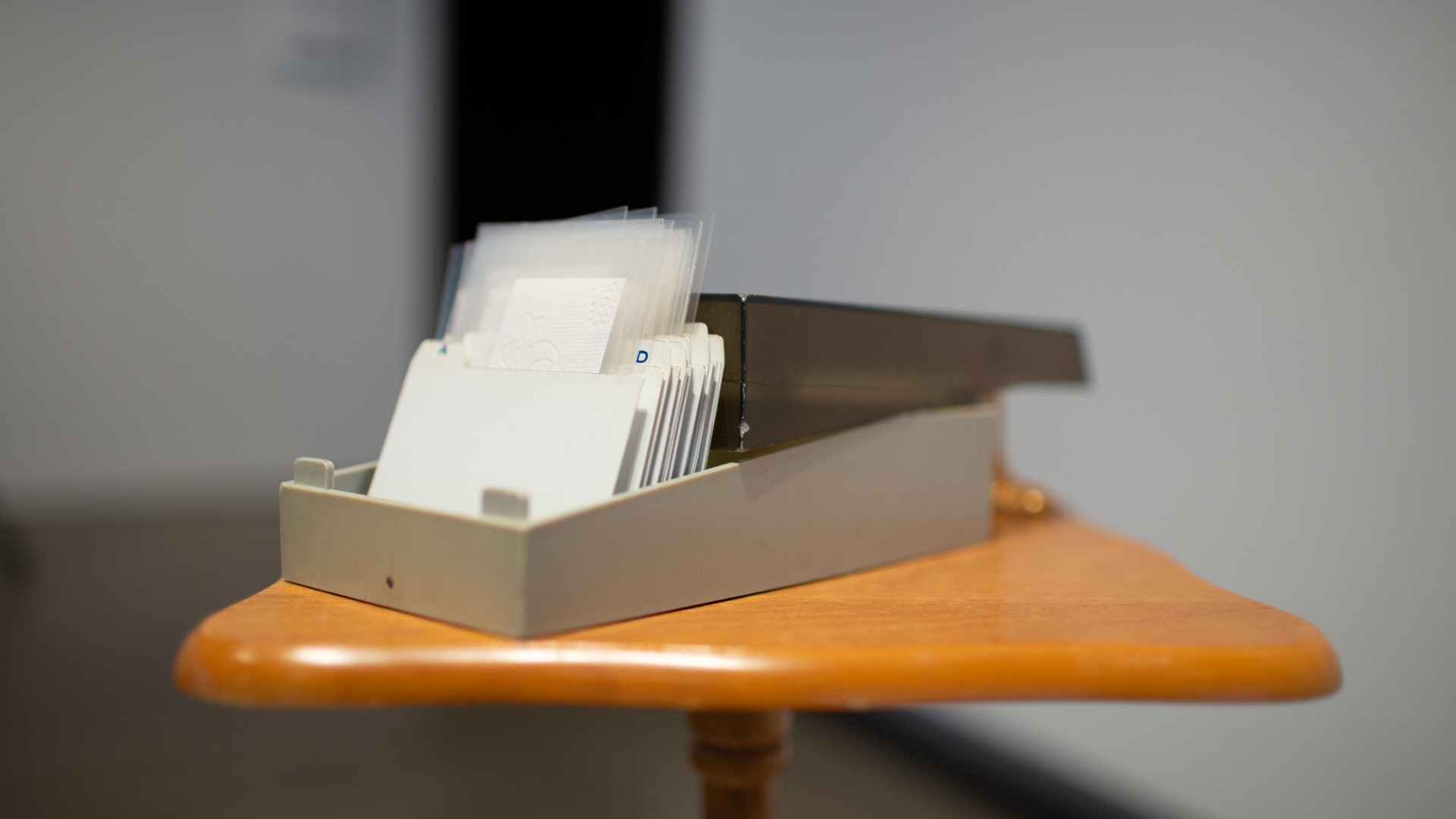
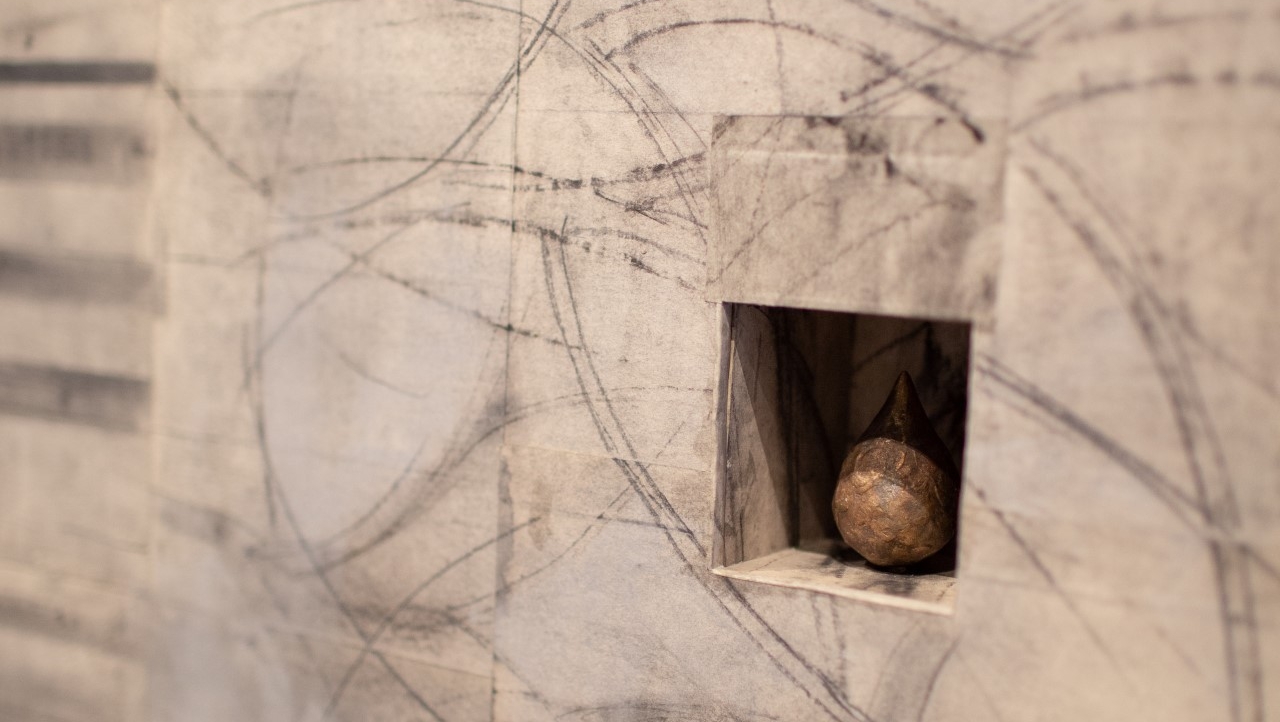
Rioux Fiset’s work relates to Catherine Desroches’ as they both cultivate a sacred attentiveness to their environment through a process that is immersed in repetition. Desroches pursues a poetic exploration of the life cycle of the foundry, which has resulted in a piece that intertwines their drawing and sculptural practices.
déliaison du corps contre le ciel (2022) is a drawing on newsprint wheat-pasted onto a wood panel. At its heart is a tear-drop-shaped bronze piece bearing the gentle marks of the maker’s hand, housed in a square nook built into the wood panel.
Desroches’ piece has a potent sensitivity to materials and their context. The drawing is created with the remnants of the foundry casting process such as lost-wax casting dust, kiln ashes, and graphite. All these elements unify to create a dense and stormy accumulation of marks on the newsprint. The repetitive lines vibrate among the dust and ash clouds gathering on the surface.
As the viewer’s eye keeps moving across the panel, the subtle but dense energy of its making rises. Streaks of charcoal sweep across the gridded newsprint and looking closer one can discern finger-marks and the swift movements of the hand.
Desroches has attuned themself to the cyclical materiality of the foundry — in making their bronze tear they enliven the remnants left behind in the foundry process. “The bronze tear is a symbolic heart placed at the core of this large drawing,” says Desroches; “[a] body born in part from the material specificity of the life cycle of foundry activities. Thus joined, this tear-core and this drawing-body relate to the physical and temporal reality of the foundry.” iv
Through this synthesis, the artist’s drawing not only reflects on the foundry process but embeds itself into it. Its life cycle is ever-present and alive — vestiges from the making of the bronze tear saturate the drawing itself. They both come from one another and become one another.
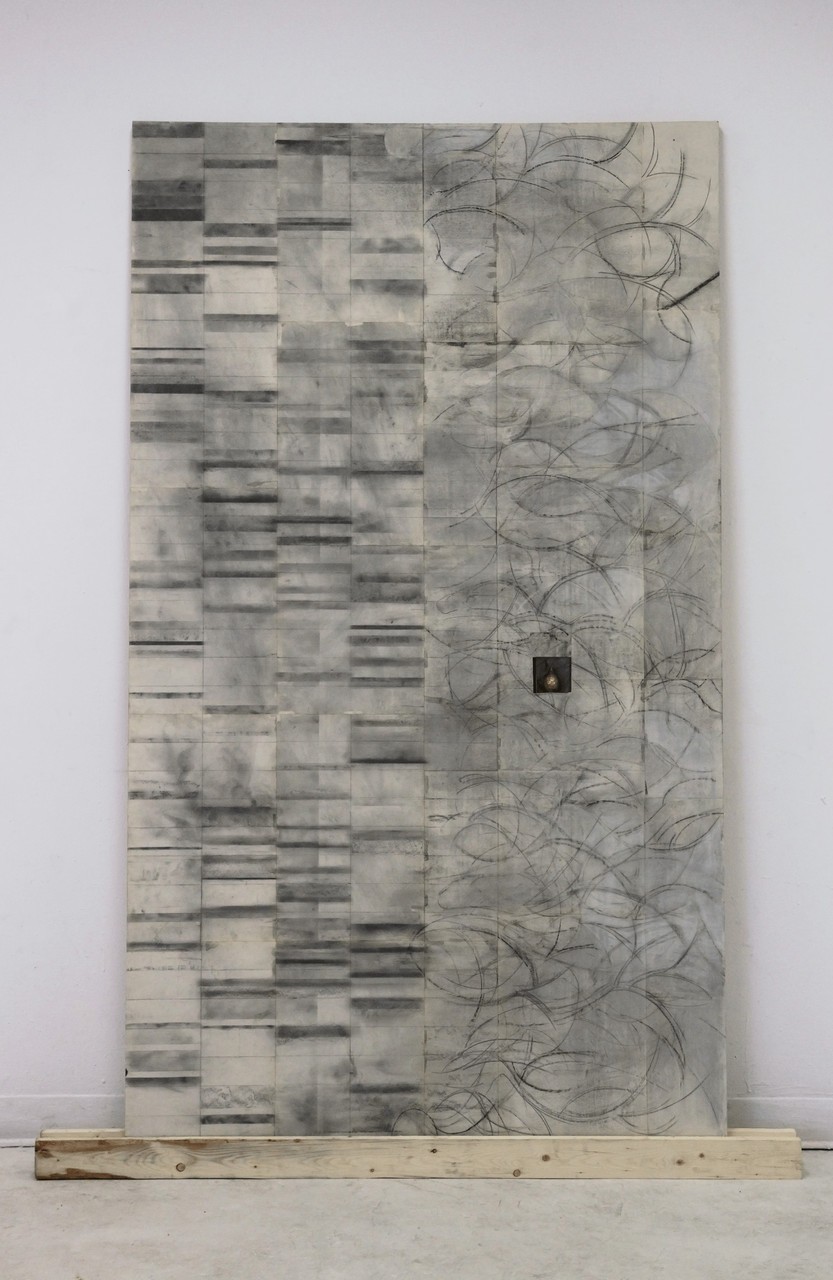
In his 1967 text, The Society of the Spectacle, Guy Debord writes that “the society that radically separates the subject from the activity it steals from him is in reality separating him from his own time.” v The individual in such a society is alienated from their labour and time. The parasitism of time’s linearity emerges from a society plunged deep into the illusion of production and consumption, bound hand and foot by its own notions of progress.
How, then, can we escape this imprisonment of time? Art becomes a possible escape route — the kind of art that diverts the linear, production-oriented gaze towards a contemplative, circular one. The ephemerality of And the suspicion arises that even the zebra was not designed for our benefit enacts it by leaving no trace and thus resisting commodification. No longer acting under the guise of an infinitely resourceful earth, we find that by tuning into the present we cannot neglect the urgency of remedying our relationship to consumption and waste.
Rioux Fiset and Desroches’ artworks are also resistant and deeply contemplative. They wrestle against the commodification of life by shifting their gaze towards materials and processes that are overlooked, and by elevating them with great care. Rioux Fiset turns to the bathroom, a space not often deemed worthy of attention, while Desroches pursues an intense meditation on discarded materials.
With these materials and spaces, they labour in repetition. Not an unconscious repetition that forms a habit, nor the mindless one of alienated labour, but a conscious and meditative repetition. One that alters the maker’s state of mind.vi
What change does this act introduce in the artist? Desroches offers a response: “… to confirm a certainty of being in the World, of belonging to it, and that participating in it is a remedy… towards correcting and inverting the poverty of my vertical modern life.” vii
Slowly, the hostility of an oncoming future and the desperate scramble towards productivity is replaced by the stillness of the present moment, which overwhelms and awes.
[i] Rianna Huynh in conversation with the author, August 2023.
[ii] Yann-Marc Pignard in conversation with the author, August 2023.
[iii] Clara-Jane Rioux Fiset in conversation with the author, August 2023.
[iv] Catherine Desroches in conversation with the author, August 2023.
[v]Guy Debord, The Society of the Spectacle, trans. Ken Knabb (London: Rebel Press, 2005). 73-76, 87-92.
[vi] Gilles Deleuze, Difference and Repetition, trans. Paul Patton (New York: Columbia University Press, 1995). 70-77.
[vii] Catherine Desroches in conversation with the author, August 2023.
About the author
Raviya Azad is. She lives and works.

